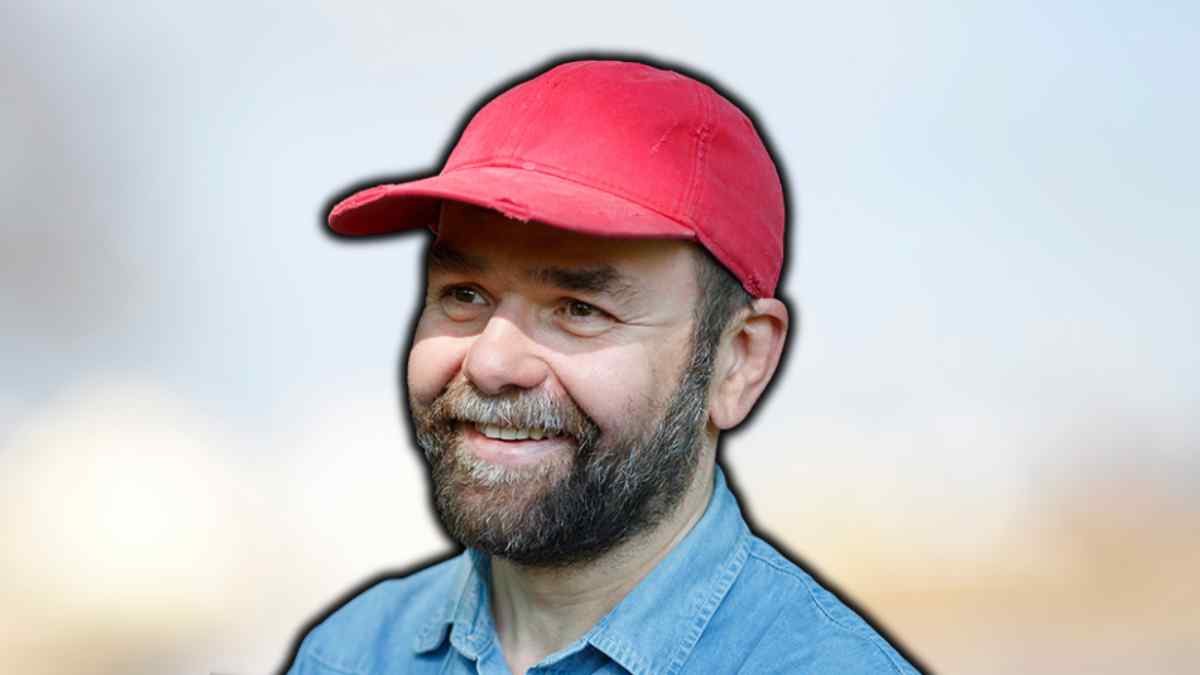
Anthony Shapland is a name that resonates deeply within the modern British creative landscape — an artist, writer, and curator whose work straddles the intersection of visual art and literature. Born and raised in the Rhymney Valley of South Wales, Shapland’s artistic journey captures not only his personal narrative but also the collective memory of a community shaped by change, industry, and silence. Through his art, writing, and curatorial projects, he explores identity, visibility, and the delicate relationship between what is seen and what remains unspoken.
Table of Contents
ToggleEarly Life and Education
Anthony Shapland was born in Bargoed, a small town in the Rhymney Valley, South Wales — a place once thriving with industrial life but later marked by economic decline. The visual and social decay of that changing landscape profoundly influenced his creative vision. Growing up amid the fading echoes of the coal-mining era, he developed a fascination with memory, silence, and transformation — motifs that would later underpin both his artistic and literary works.
Shapland studied Fine Art and quickly gravitated towards conceptual and multidisciplinary practices. Rather than confining himself to a single medium, he became interested in the overlaps between photography, film, sound, and text. This experimental approach nurtured a sensitivity to rhythm, light, and space — qualities that subtly shape his writing style today.
The Formation of g39 — A Platform for Artists
One of Anthony Shapland’s most significant contributions to the Welsh arts scene is his co-founding of g39, an artist-led contemporary art space in Cardiff. Established to provide a platform for emerging and experimental artists, g39 has become one of the most respected creative institutions in Wales.
Shapland’s leadership within g39 reflects his deep belief in community and collaboration. The space embodies a philosophy of inclusion, encouraging artists to explore new ideas and challenge conventional structures of artistic production. It is not just a gallery — it is a space for dialogue, for artistic risk-taking, and for questioning the boundaries between artist and audience. Through his curatorial work, Shapland has consistently highlighted marginalised voices, offering visibility to artists who might otherwise remain unseen.
A Visual Language Rooted in Memory
In his visual art, Anthony Shapland weaves together fragments of daily life, snippets of sound, and gestures of ordinary existence. His works often explore the small details that define human experience — a flicker of light, a passing phrase, an unfinished gesture. This attention to subtlety gives his art a poetic quality, where absence becomes as meaningful as presence.
Much of his practice examines the idea of “seeing” and “not seeing.” He is fascinated by how we construct meaning through what we observe — and how much of reality lies beneath the surface of perception. This idea of partial visibility reflects his personal history as a gay man growing up during the 1980s, a time when silence was both a necessity and a survival strategy.
Transition from Art to Literature
While Anthony Shapland’s roots lie in the visual arts, his move into literature was a natural progression. His background in film and photography equipped him with an acute sense of pacing, framing, and atmosphere — skills that translate beautifully into the written word. His prose carries the precision of a camera lens: tightly focused, composed, and charged with quiet emotion.
Before the publication of his novel, Shapland wrote short fiction and essays that blended personal reflection with cultural observation. His short story “Foolscap” was shortlisted for the prestigious Rhys Davies Award, marking his arrival as a literary force. The story, much like his later work, captures the nuances of human connection in the face of fear and invisibility.
The Breakthrough Novel — A Room Above a Shop
In 2025, Shapland released his highly anticipated debut novel, A Room Above a Shop. The book, set in South Wales during the late 1980s, tells the story of two men — M and B — whose secret relationship unfolds in a small room above a hardware shop. The novel explores the tension between public life and private longing at a time when homosexuality was still met with stigma and silence.
The story’s power lies in its restraint. Rather than dramatizing the relationship, Shapland allows emotion to simmer quietly beneath the surface, mirroring the way many queer lives were lived — hidden, coded, yet profoundly tender. The narrative captures the uncertainty of the era, shaped by Section 28, the AIDS crisis, and the social conservatism of Thatcher’s Britain.
The novel’s sense of place is deeply rooted in the Welsh valley landscape. The decaying towns, the subdued conversations, and the rhythm of everyday life form a powerful backdrop to the personal turmoil of the characters. It is not only a love story but also a portrait of a community navigating economic hardship and social transformation.
Themes of Silence and Visibility
A recurring theme throughout Anthony Shapland’s work — both visual and literary — is visibility. His characters often grapple with being seen versus being hidden, a reflection of his own experiences in a culture where difference was often suppressed.
He once remarked that visibility is never neutral — to be seen can be empowering, but it can also be dangerous. This tension is evident in A Room Above a Shop, where the protagonists’ secrecy is both their shield and their prison. The novel invites readers to consider how social norms shape the limits of personal freedom.
In his art installations, too, Shapland plays with the idea of absence. Many of his works involve moments where sound cuts out, lights fade, or images dissolve — inviting the audience to notice what remains unsaid. His fascination with the gaps between things — the pauses, the silences, the erased marks — is what gives his storytelling its distinctive depth.
Style and Craft
Anthony Shapland’s prose style is minimalist yet emotionally potent. He writes with the precision of an artist sketching in fine lines — every word carries weight. His background in visual composition shapes the rhythm of his sentences; he knows when to let a scene breathe and when to hold a moment in stillness.
Reviewers have praised his ability to evoke an entire world in a single image. A glance, a line of dialogue, or a sound from a nearby street becomes an emotional catalyst. This economy of language is rare and powerful — it transforms the ordinary into something luminous.
His narrative voice is deeply empathetic, attuned to the quiet struggles of those living on the margins. Yet, rather than sentimentalising hardship, he presents it with honesty and grace, trusting readers to fill the spaces he leaves open.
Contribution to Welsh Culture
Anthony Shapland’s work carries profound importance for Welsh identity and culture. He represents a generation of artists and writers who have expanded the idea of what “Welsh art” and “Welsh literature” can be. His focus on urban valleys, queer identity, and post-industrial life introduces stories that are often overlooked in mainstream British narratives.
By bridging visual art and literature, Shapland has also contributed to the international recognition of Wales as a place of contemporary creative innovation. Through g39 and his personal practice, he has nurtured an environment where new voices — particularly from underrepresented backgrounds — can thrive.
Recognition and Critical Acclaim
Shapland’s novel A Room Above a Shop received significant critical acclaim, with The Guardian calling it “one of the most striking debut novels of the decade.” Critics have highlighted the book’s emotional subtlety and its compassionate portrayal of constrained lives. His art exhibitions have also been showcased in major galleries, earning praise for their conceptual depth and sensitivity to human experience.
His inclusion in Literature Wales’ Representing Wales programme further underscores his role as a leading voice in the nation’s creative evolution.
The Connection Between Art and Writing
For Shapland, writing and visual art are not separate disciplines but parallel expressions of perception. He approaches the written word the same way he approaches visual form — by observing how light, sound, and silence shape human experience. His stories often emerge from the same impulse that guides his art: a desire to preserve fleeting moments and reveal the emotional architecture hidden beneath everyday life.
This synthesis of visual and literary thinking makes his work uniquely textured. Readers can “see” his stories as vividly as if they were watching a film; every scene feels carefully composed, every silence intentional.
Personal Identity and Universal Themes
Although Anthony Shapland’s work is grounded in his personal identity as a gay man from a working-class Welsh community, his stories transcend individual experience. They speak to universal human emotions — love, shame, resilience, and the longing to be understood.
His portrayal of queer lives is not defined by tragedy but by authenticity. He depicts characters who are flawed, tender, and real — people navigating a world that often fails to see them fully. In doing so, he challenges stereotypes and expands the emotional vocabulary of contemporary fiction.
Legacy and Future Work
Anthony Shapland’s impact is already evident, but his journey is far from complete. With his debut novel setting a new benchmark for literary quality, readers and critics alike await his next work with anticipation. His dual role as an artist and curator ensures that his creative influence continues to ripple across multiple disciplines.
He stands as a bridge between generations — someone who honours the past while pushing Welsh creativity towards new horizons. Whether through written words, visual images, or curatorial projects, Shapland continues to challenge how we see, feel, and remember.
Conclusion
Anthony Shapland is more than an artist or a novelist — he is a storyteller of silence and light, of love and loss, of what it means to exist on the edges of visibility. From the quiet streets of the Rhymney Valley to the pages of one of Britain’s most acclaimed publishing houses, his journey embodies resilience, imagination, and truth.
In a time when voices from overlooked regions and identities are finally being recognised, Shapland stands as one of the most important cultural figures of his generation. His work reminds us that art — whether painted, filmed, or written — has the power to illuminate the unseen and give voice to the unspoken.



